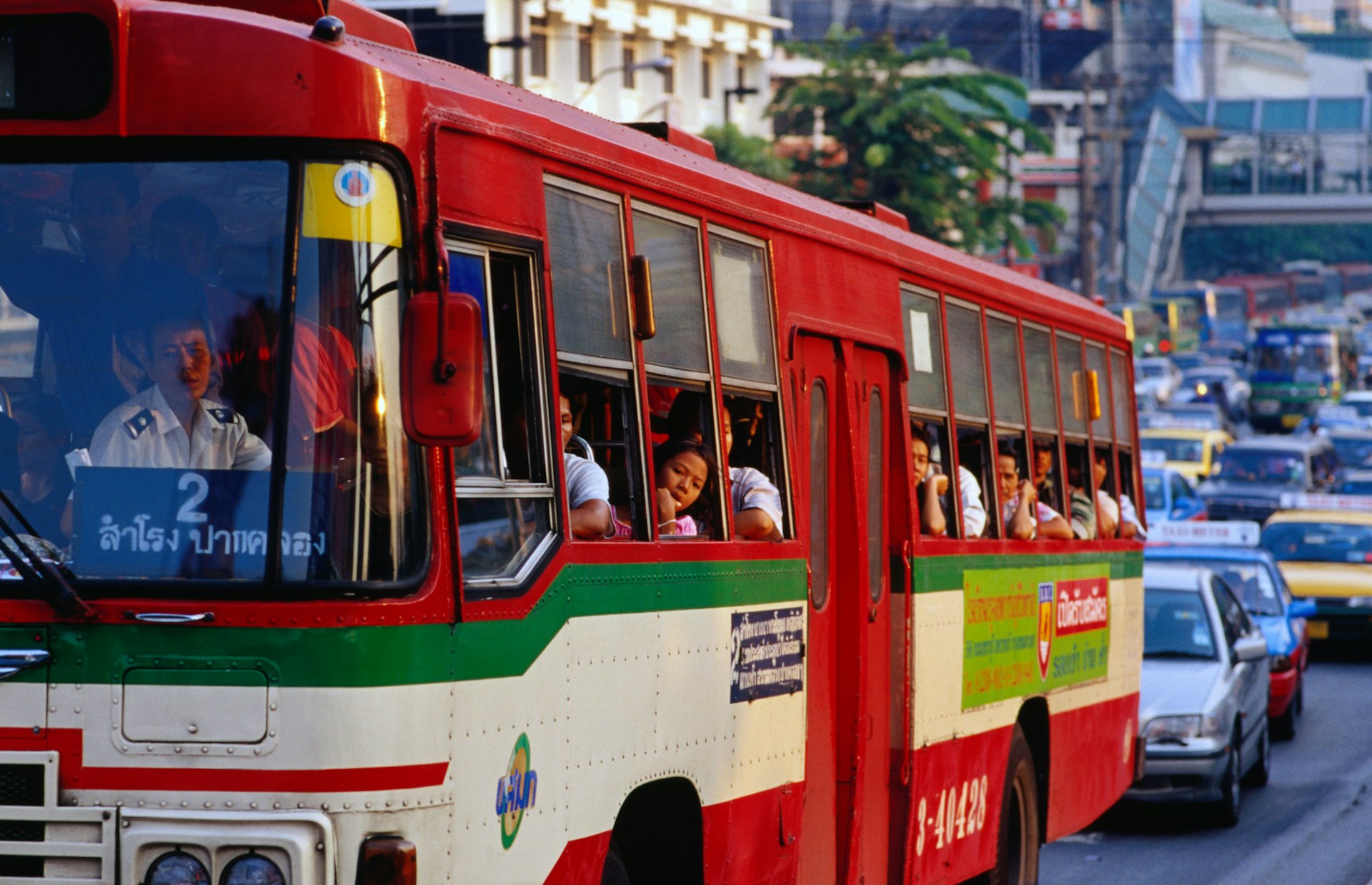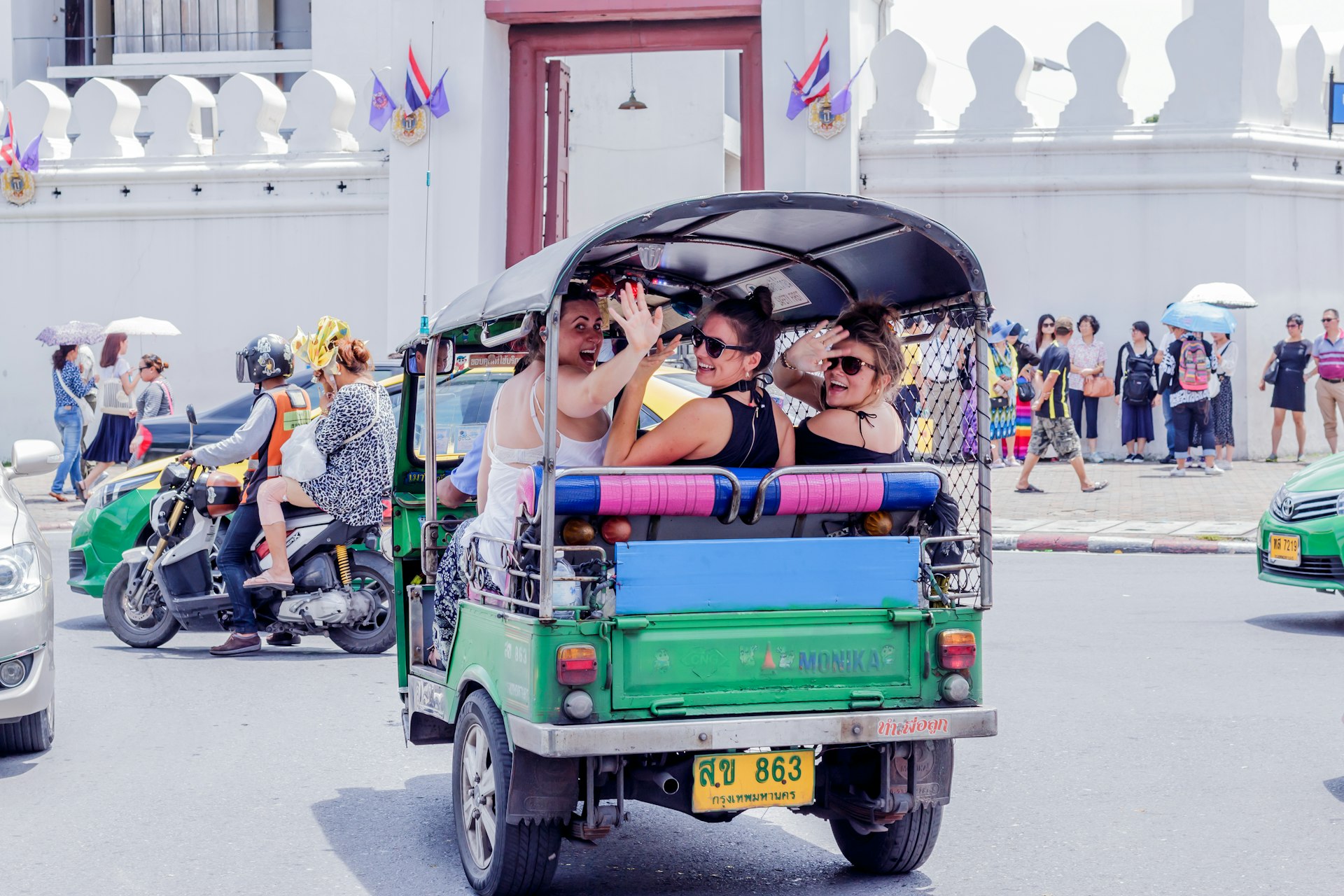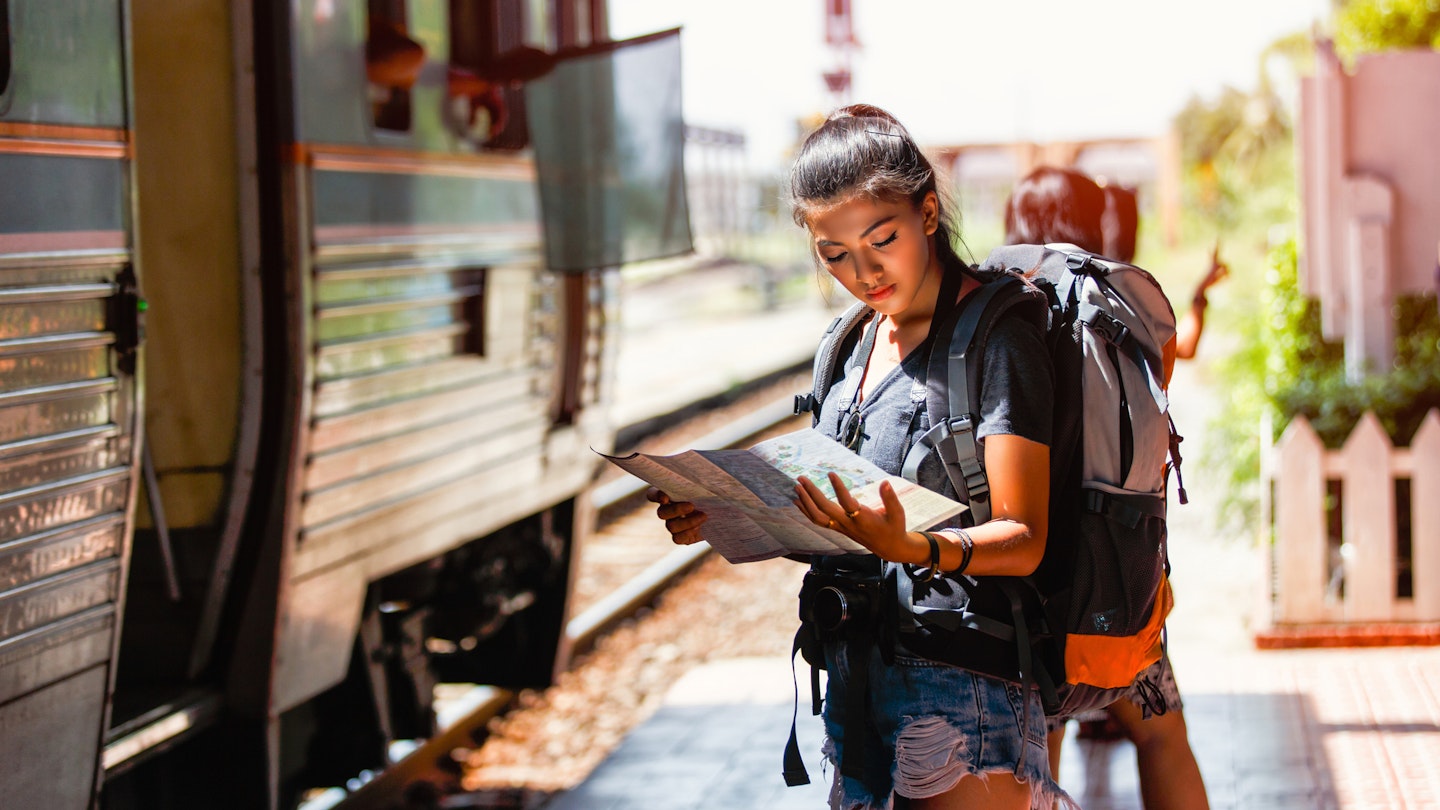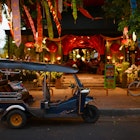You’ve hit the ground in Bangkok and are ready for that next step. Now how do you get around?
The good news is that Thailand is extremely well-connected. Whether you’re heading north to the mountains of Chiang Mai or south to an island, there are flights, trains, buses, minivans, and boats ready to get you there. And better yet, most of these methods of transport are efficient and good value. If anything, with so many options, choosing between them can be a bit overwhelming. To make things easier, we’ve put together a crash course in Thai transportation.
Flying is the fastest way to get around Thailand
These days, planes are the most efficient way to get around Thailand. The country’s expansive air network links Bangkok with all the major tourist destinations – Chiang Mai, Ko Samui, Phuket, and Krabi – as well as just about every provincial capital you’ve never heard of. And if your destination is an island, some of the low-cost carriers also offer airport-bus-ferry transfers.
Note that Bangkok has two airports, with Don Mueang International Airport functioning as the de-facto budget/domestic hub, and Suvarnabhumi Airport as the primary international hub. A taxi into town from either should cost the equivalent of around US$10, including an obligatory airport fee of 50B but excluding tolls. Both airports are also linked to Bangkok’s urban train network, and there’s a shuttle bus that runs between the two airports.
The major domestic operators are AirAsia, Bangkok Airways, Nok Air, Thai Lion Air, Thai Smile and VietJet Air. The competition means domestic flights are relatively cheap, but as some of these airlines are essentially budget airlines, they can be sticklers when it comes to luggage weight and size – you’ve been warned.

The train is the slow but steady way to see Thailand
If you’re not in a hurry, and if the rails lead to where you want to go, the State Railway of Thailand offers a cheap, comfortable way to get around Thailand. The country’s rail network spans four main long-distance lines – Northern, Northeastern, Eastern and Southern.
Bangkok now has a shiny new train station, Krung Thep Aphiwat Central Terminal, north of the city center. It’s the terminus for the Northern, Northeastern and Southern lines and is also connected to the Metro network. With the completion of this station, there’s talk of high-speed trains crisscrossing the country, although nothing has been finalized. The former terminus, Bangkok Railway Station (Hua Lamphong), in Chinatown, remains the hub for local, commuter and tourist trains, as well as all trains on the Eastern Line.
There are various types of seats, outlined below. To avoid scams or overpaying, buy your tickets directly at one of the stations mentioned above, or via the State Railways of Thailand website or hotline (1690).
First-class
- Available on Overnight Express and Special Express trains only, first-class tickets include an air-conditioned cabin, two twin beds, a private bathroom and a lockable door.
- These are ideal for couples or a family looking for privacy.
- Book several days in advance, especially in peak season (November to March).
Second-class
- The most popular option and available as seats or sleepers depending on the route.
- Can choose between a more expensive air-conditioned cabin or one with a fan.
- Great for solo female travelers, as there are women-only sleepers available on some trains.
Third-class
- Recommended for short distances.
- No frills wooden seats with no air-conditioning.
- A good option for those on a tight budget.

Save money by taking a bus or minivan
Buses and minivans form the most comprehensive – and cheapest – network of transportation in Thailand. There are a variety of bus companies, but the most reliable are those run by the government-subsidized The Transport Co. Buy tickets online or in person at the bus station to avoid scams. In particular, be wary of buses that operate directly out of tourist centers, such as Bangkok’s Khao San Road, as there have been cases of baggage theft and commission-seeking stops.
As with most transport in Thailand, there are different levels of luxury.
- VIP, Super-VIP, and 1st-class buses are recommended for overnight journeys as they have plenty of room to recline and a toilet on the bus. Some even have meal vouchers and bus stewards. Be sure to bring a sweater and perhaps earplugs, as sub-zero air-con and movies on full-blast are the other “perks” of this class.
- Second-class means air-conditioning, but no on-board toilet, and perhaps a few more stops.
- 'Ordinary' non-air-con buses are a dying breed these days, although they still can be found in more rural areas. These buses are very slow, with frequent stops.
For an increasing number of short and medium-distance routes in Thailand, minivans are superseding buses. Both private and run by The Transport Co., they’re cheap and quick, but passengers are typically jammed in like sardines, and drivers can be reckless.
For more freedom, consider a car or motorcycle
Although renting a car in Thailand may seem intimidating, driving is a great way to explore the country outside of urban areas. That said, Thailand is home to some dangerous roads, and it’s essential to take things slow and be extra cautious.
Cars can be rented in most major cities and airports both from local companies and the usual international chains. Motorcycles can be hired from guesthouses and small mom-and-pop businesses. For the latter, most businesses ask that you leave your passport as a deposit. Before driving off, check the condition of the motorcycle and ask for a helmet (which is required by law).
In theory, short-term visitors who wish to drive any vehicle (including motorcycles) in Thailand need an international driving permit. In practice, this rule is rarely enforced.
Let boats and ferries take you to the islands
There’s a variety of boat travel in Thailand, spanning both river and sea. For short hauls, including trips along Bangkok’s canals, the standard method of aquatic transport is the open-air long-tail boat. Typically you’ll need to haggle for a price in advance. Larger, roofed, inboard engine boats are used for trips of up to an hour or two. Hydrofoils, ferries and larger, more comfortable speed boats cover longer boat journeys.

Getting around Thai cities
A common way to get around large Thai cities is via motosai (motorcycle taxis). You’ll see the vest-wearing drivers on street corners, from where they run routes, generally short distances for set rates, or you can negotiate a ride elsewhere – a clever solution when traffic is bad. Hang on for dear life, and don’t forget to wear a helmet.
Although still common in Thai cities, the three-wheeled open-air vehicles known as túk-túks are less a form of public transport and more a novelty these days. It’s necessary to haggle with the driver before you get in; starting rates are typically astronomical for non-Thais. Also, be wary of drivers who take you on detours to their "friend’s shop." This is a common scam for drivers who get kickbacks from store owners to drive tourists to their businesses.
Taxis are found in most larger provincial capitals, although taxi "mafias" in some destinations mean fares can be high. To avoid communication problems, download the Grab app (Uber doesn’t operate in Thailand).
Bangkok is the only Thai city with an urban rail system. The Metro (MRT) and Skytrain (BTS) are convenient and expansive, and the network is constantly growing. Trains operate from 5:30 am to midnight, depending on the route, with fares from 14B to 71B (about 40c to $1.95 in US dollars).
Accessible transportation in Thailand
Thai buses and trains don’t typically have facilities for passengers with a disability, and Bangkok is the only place in the country where there are some provisions for disabled travelers. The Bangkok Mass Transit System has elevators in 17 of its 36 stations; the Metro is even more accessible as all stations have an elevator, and there are locks for wheelchairs.
Download Lonely Planet's Accessible Travel guide for free.












